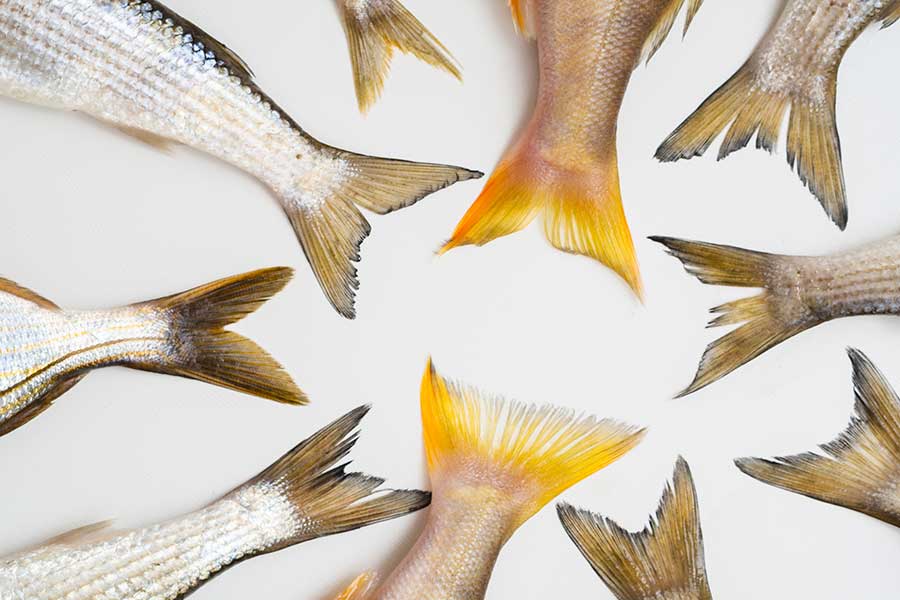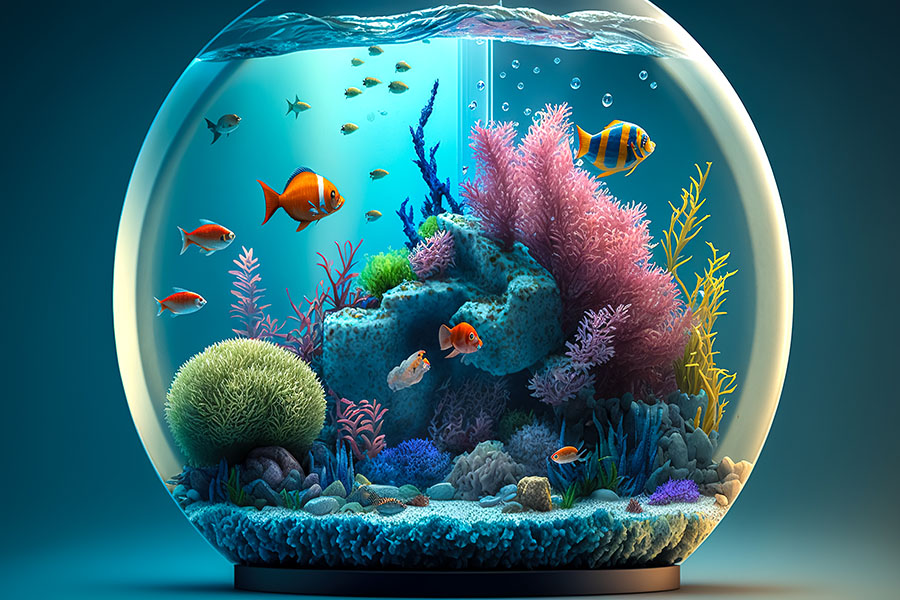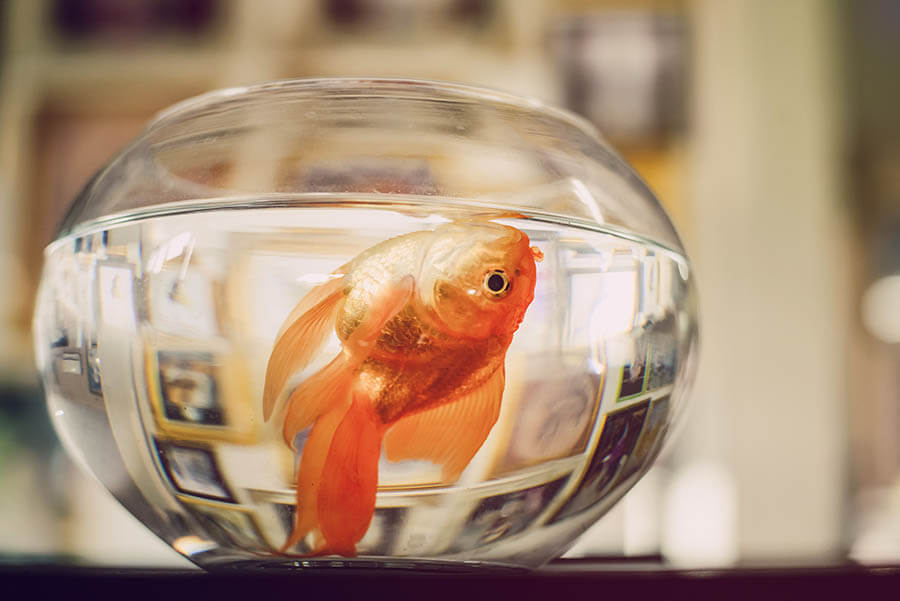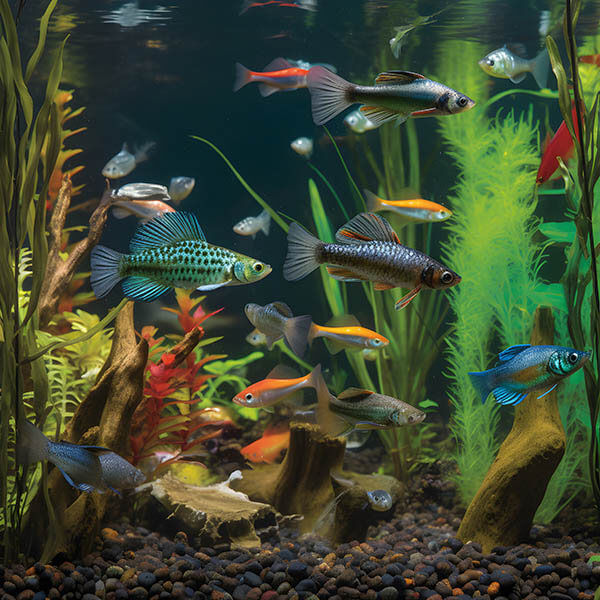Understanding and addressing common fish diseases is crucial for any aquarist or fish enthusiast. By recognizing the symptoms, understanding the causes, and implementing effective treatment strategies, aquarists can promote the health and well-being of their aquatic companions. Join us as we explore the intricacies of these conditions and learn how to provide the best care for fish affected by these diseases.
Dropsy
Dropsy is due to the Aeromonas bacteria and is among the most common fish diseases. The symptoms are swelling in the belly due to fluid buildup, along with other symptoms like paleness, loss of appetite, and lethargy. Stress and poor water quality contribute to the development of dropsy. Early identification and treatment are necessary for speedy recovery. Treatment options include salt treatment and antibiotic treatment in severe cases. Euthanasia may be necessary if the fish does not respond to treatment.
Swim Bladder
Swim bladder disorder in fish occurs usually because of poor water quality, stress, injuries, overeating, and constipation. Symptoms include difficulty swimming and abnormal floating or sinking. Diagnosis involves physical examination and possibly X-rays. Treatment is a bit challenging, as it may involve adjusting water flow, hand feeding, and possibly antibiotics. In severe cases, euthanasia may be considered.
Lymphocystis
Lymphocystis is a viral infection that affects the skin and fins of both saltwater and freshwater fish. The most common reason is the lymphocystis disease virus which usually presents as cauliflower-like growths on the skin and fins of infected fish. These growths may vary in size and can appear white, pink, or gray. Lymphocystis is generally not fatal and does not cause significant harm to the infected fish. Treatment for lymphocystis may involve the use of antiviral medications to help reduce the severity of the infection and promote healing. Fishkeepers and aquarists should also be mindful of the potential for spreading the virus to other fish in the same environment and take appropriate measures to minimize transmission, such as quarantining infected individuals where possible.
Branchiomycosis
Branchiomycosis is a fungal infection that can affect a fish’s gills, potentially leading to serious respiratory issues and even death. The infection is often because of poor water quality. Symptoms of branchiomycosis include blotchy or mottled gills, as well as grey specks on the skin. If you ignore it, the infection can spread to the skin and result in serious respiratory problems for the fish. Unfortunately, by the time you notice branchiomycosis, it is often too late for effective treatment. However, if you catch it early, there are treatments available to help the fish’s skin heal and prevent the infection from spreading.
Gas Bubble
Gas bubble disease in fish is due to gas supersaturation in the water, leading to microbubbles forming in the fish’s tissues and blood vessels. Diagnosis involves physical examination, X-rays, and microscopic analysis. Treatment includes aspirating the bubbles and using antibiotics. Identifying and addressing the source of microbubbles in the water is important.
White Spot
The culprit behind White spot illness is the Protozoa Cryptocaryon irritans, which is a common parasite in saltwater aquariums. The parasite reproduces in the gill tissue and is harmful to fish. Diagnosis involves a gill biopsy and skin mucus scrape. Treatment for the free-swimming somite stage requires multiple doses of medication. Copper is a common treatment, but it’s toxic to invertebrates. If possible, removing the fish from the tank for treatment can help break the parasite’s life cycle in the main aquarium.
Velvet Disease
Velvet disease, also known as rust disease or gold-dust disease, is characterized by a yellowish, dusty appearance on a fish’s skin. It is caused by the dinoflagellate Oodinium pillularis. Symptoms include body rubbing, fin twitching, and a dusty and hazy appearance on the fish’s skin. The disease is common in poorly maintained aquariums and can be influenced by factors such as abrupt temperature changes, introduction of new fish without quarantine, and old water. Diagnosis is performed by a veterinarian through microscopic analysis. Treatment options include methylene blue or quinoline salts, covering the aquarium to weaken the parasite, and increasing the water temperature to disrupt the parasite’s life cycle.
Let’s Wrap it Up!
In conclusion, understanding and addressing common fish diseases is essential for maintaining the health and well-being of aquarium fish. By recognizing the symptoms, understanding the causes, and implementing effective treatment strategies, aquarists can provide the best care for their aquatic companions. It is important to promptly address any signs of illness, seek proper diagnosis, and administer appropriate treatment to ensure the overall health and happiness of the fish. Additionally, preventive measures such as maintaining good water quality, quarantining new fish, and regular observation can contribute to disease prevention in aquariums. By staying informed and proactive, fish enthusiasts can create a thriving and disease-free aquatic environment for their beloved fish.
Jehanzaib Ahmed
CEO
Meet Jehanzaib Ahmed, the Paw-some Force Behind Wildlypet!
As a lifelong animal lover, he has turned his passion into a profession. With an unwavering love for all creatures, he founded WildlyPet to provide top-notch care for your pet friends. With good experience in the pet care industry, he is a seasoned expert in ensuring the health and happiness of pets. His knowledge extends from pet nutrition to behavioral training, making him your go-to guru for all things pet-related.
Beyond his business, he is deeply involved in the local pet-loving community. He actively supports rescue organizations and advocates for pet adoption, believing that every pet deserves a loving home.












